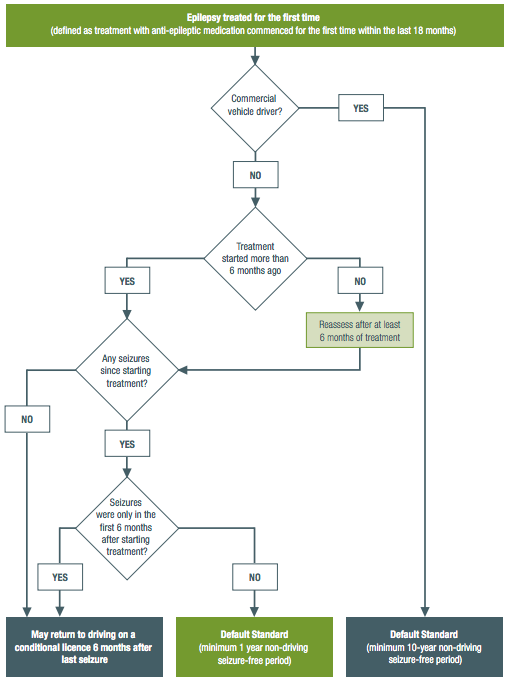Purple Day (26th March) is a global initiative dedicated to raising epilepsy awareness. Purple Day was founded in 2008, by nine-year-old Cassidy Megan of Nova Scotia, Canada. Motivated by her own struggles with epilepsy, Cassidy started Purple Day in an effort to get people talking about the condition and to let those impacted by seizures know that they are not alone. She named the day Purple Day after the internationally recognised colour for epilepsy, lavender.
 Can someone with Epilepsy drive?
Can someone with Epilepsy drive?
The answer is “sometimes”.
Epilepsy and Driving
As many of you would know, Epilepsy can have a massive impact on independence, especially when it impacts on your driver’s license. Driving is a large part of many peoples life for general wellbeing. It helps us get to the shops for a carton of milk, to getting to the beach or your favourite spot to get away from it all, dropping the kids at school, or hanging out with your mates. Basically, it gets you out of the house without relying on others.
Unfortunately, uncontrolled seizers are a significant risk to driving safety. According to the Austroads medical guidelines for driving 2016, “Seizures vary considerably, some being purely subjective experiences (e.g. some focal seizures) but the majority involve some impairment of consciousness (e.g. absence and complex partial seizures) or loss of voluntary control of the limbs (e.g. focal motor and complex partial seizures). Convulsive (tonic-clonic) seizures may be generalised to the onset or secondarily generalised with focal onset. Seizures associated with loss of awareness, even if brief or subtle, or loss of motor control, have the potential to impair the ability to control a motor vehicle. Most studies have reported an elevated crash risk among drivers with epilepsy, but the size of the risk varies considerably across the studies. The majority of studies have found that individuals with epilepsy are twice as likely to be involved in a motor vehicle crash compared with the general driving population. More recent studies have found that drivers who do not take anti-epileptic medication as prescribed are at an increased risk of experiencing a crash.”
I just had my first seizure, now what and how does it impact on driving?
First, you need to see your GP and discuss the need for a referral to a neurologist. In this meeting, you should discuss your driving and what will happen.
The Austroads Medical Guidelines 2016 state “The risk of recurrent seizures in people starting treatment for epilepsy is sufficiently low to allow driving to resume earlier than required under the default standard.”
We have included the flowchart to help you understand the waiting period if you have had your first seizure below:

General considerations for driving with Epilepsy:
According to the Epilepsy Action Group of Australia, “getting the right diagnosis of your seizure type is important. It means the right management is started, and review for driving safely can be clarified. Any person who has seizures should see a neurologist so the risk of further seizures and the need for treatment can be decided.”
If you have had a recent seizure, then waiting out the seizure-free period is required. These periods are dependent on the type and frequency of the seizures you have had. We like to educate our clients so there are no surprises. You can find out all about what the doctors refer to assist them to make a decision in the medical guidelines in the link at the end of this blog post.
If after this period, if you and your neurologist believe that the seizures are controlled, such as:
- Once off a seizure,
- Only happen when sleeping, or when affected by a certain event, such as alcohol or a medication
- Controlled by antiepileptic-medications and you continue to take these
- Long and well-recognised lead-in period to a seizure allowing time to avoid driving
Driving may be considered as safe to return to.
If you have epilepsy and wants to drive again, or you have a client with epilepsy, Williams Occupational Therapy may be able to help. If you want to know how Williams OT could help you with driving, give us a call on 0466 529 891, or write us an email at admin@williamsot.com
Useful resources for more information:
https://www.epilepsy.org.au/about-epilepsy/living-with-epilepsy/lifestyle-issues/driving/
https://www.epilepsy.org.au/wp-content/uploads/2017/09/Fact-Sheet-Driving.pdf
Medical standards your specialists will refer to when making a decision about your ability to drive when diagnosed with epilepsy. Refer to pages 83-96.
https://www.austroads.com.au/drivers-vehicles/assessing-fitness-to-drive



